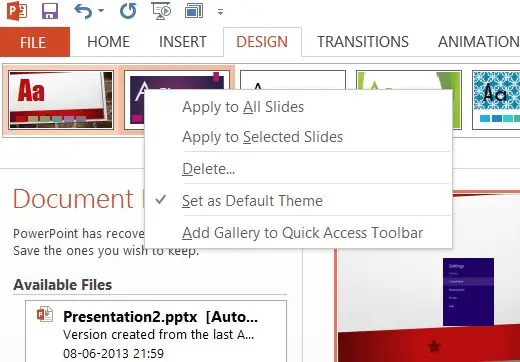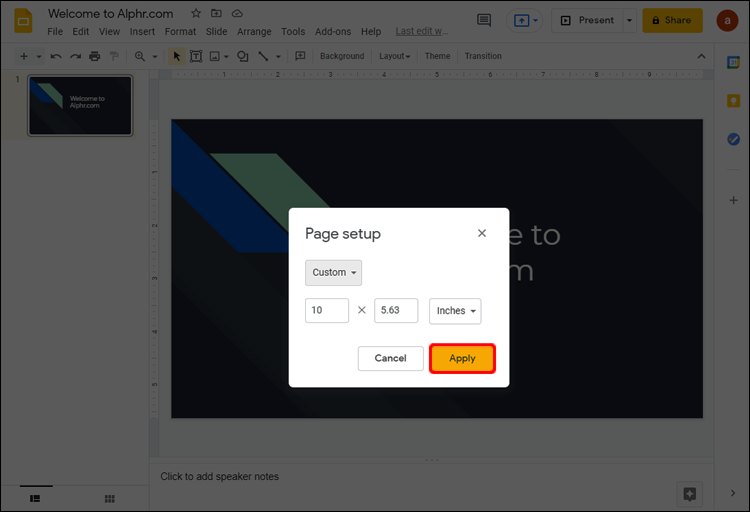

To request help related to this article, please see our Service Catalog. Microsoft PowerPoint 2013 uses the default 16:9 widescreen size for all slides, but you can use the 4:3 standard size (which was the default in earlier. Select Just This One when the Export Slide window appears.Click the File button at the top left of the screen, then select Save As and then select where you'd like to save it.Save the banner onto your local computer as a GIF, JPEG, or PNG file format.In the Presentation screen, type the course name, add background colors or apply any Themes, and insert an image if desired.You should leave these dimensions set at the default values. The default Banner dimensions are 8" by 1" wide.PowerPoint will ask if you'd like to maximize the size of your content.On the Slide Size window, scroll down and choose Banner. Click OK.Click on the Design tab and then click Slide Size.
SET POWERPOINT SLIDE SIZE DEFAULT HOW TO
Step-by-Step Guide How to Create a Banner for Your Course in PowerPoint Simply follow the steps below to create a custom banner for your course (examples in Microsoft PowerPoint 2016, newer versions will be similar).

Right-click your custom theme and then select “Set as Default Theme” from the drop-down menu.Creating a banner in PowerPoint is easy. Next, head over to the “Design” tab and select the “More” arrow in the “Themes” group.Ī list of themes will appear. Select the one you want to make the default template.Ī new window will appear, giving you a preview of the template and some basic information (if you input any). Next, select the “Custom Office Templates” option. To set your custom theme as the default, open PowerPoint, select “New” in the left pane, and then click the “Custom” tab. After that, it’s time to set it as the default template that PowerPoint opens with. Once you’re happy with your setup, save your template and exit out of PowerPoint. RELATED: How to Create a Custom Template in PowerPoint Here, you can customize the fonts, headings, colors, text and image box placement, and more. The Slide Master will appear in the left pane. To access the slide master, click on the “View” tab and select “Slide Master” in the “Master Views” group. Once you’re finished with that, it’s time to open PowerPoint’s Slide Master, which is where the rest of the customization will take place. Now, with your blank presentation ready, go ahead and select the slide orientation and size, which you can do by choosing the “Slide Size” option in the “Customize” group of the “Design” tab. You can do so by opening PowerPoint, selecting “New” in the left pane, and then selecting “Blank Presentation” from the template library. If you are going to use the PPA (old format) macro/add-in, you have to import it through File tab -> Options -> Add-Ins -> Manage -> PowerPoint Add-Ins -> Go (yes, thats a mouthful). Using the PPA add-in without modifying it: 1. To get started, go ahead and open a blank PowerPoint presentation. Thats the size, in US/UK inches for 4:3 aspect ratio. The placeholders, which were setup in the slide layouts, have been formatted and any text entered into them will adhere to the predetermined styles. If youd like to set a custom size, enter the desired dimensions. While setting up a template in PowerPoint 2010, we wanted to establish the default text style for any new text boxes placed locally on a slide. By default, new PowerPoint presentations start in the 16:9 slide size format. Select an option from the drop-down menu under Slide Size. Creating a custom template in PowerPoint is quite easy. To set or change slide size in PowerPoint 2010: In Normal View, click the Design tab in the Ribbon.


 0 kommentar(er)
0 kommentar(er)
